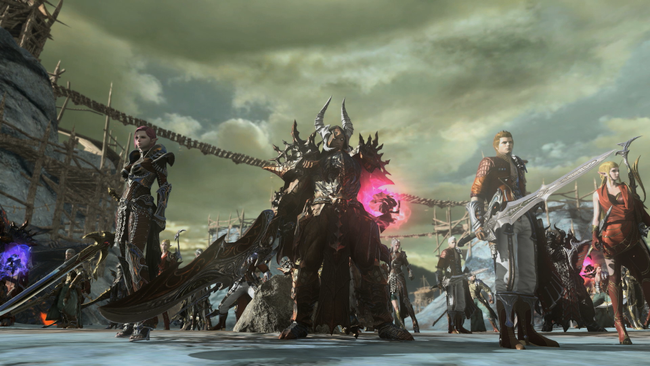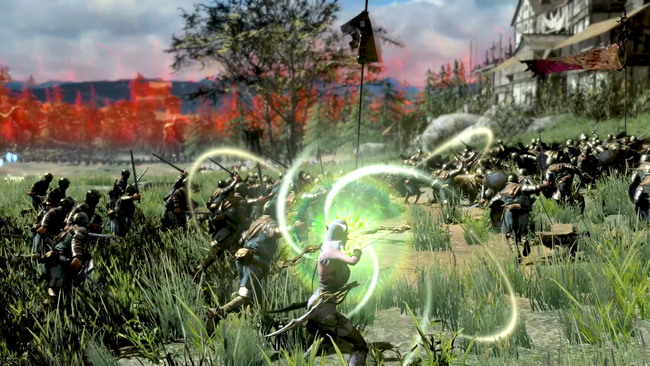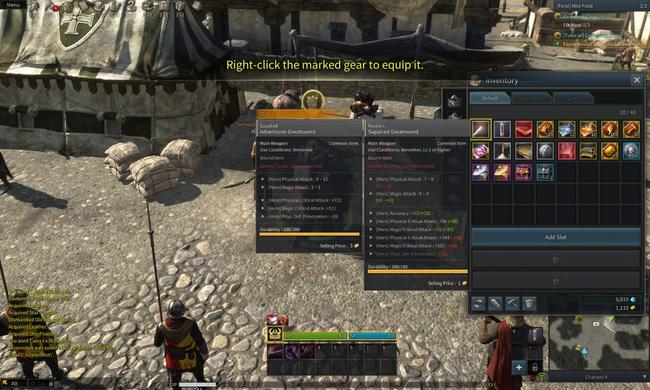
Kingdom Under Fire II Review
I want to preface this review that I was given the $100 War God Edition to review. This comes with a handful of free troops, in-game currency, experience boosters, and cosmetics. For the purpose of this review I only used two of the troops given to me and the base game starting boosters as to adjust to the content included in the standard edition of the game.
Kingdom Under Fire II is a game that has been mired in ten years of development, with numerous servers around the world opening and closing before the North American and European release of the game. Perhaps one of the most anticipated MMORPGs of the early ’00s, it is certainly an ambitious product that strives to give players a new, unique style of gameplay. Additionally, with this installment going from Free-to-Play to Pay-to-Play, GameForge and Blueside have gone away with paid currencies to prevent “pay to win” and it seems like both developer and publisher are aiming to create a fair experience for all of those who have either been eagerly anticipating or just now hearing of this title.
The narrative of Kingdom Under Fire II is as simple as they come - a battle between the forces of light and darkness, good and evil. Other than a short skippable cinematic that gives your character some vague semblance of identity, you aren’t left with much explanation as to why things on the continent of Bersia are the way they are. You are quickly introduced to important characters that occasionally escort you through vital story missions. But there isn’t much of an opportunity to really form an attachment to any of these central figures as your involvement feels more akin to a workhorse; mercilessly plowing through hundreds upon thousands of enemies, rather than a typical hero of a fantasy RPG. A riveting story Kingdom Under Fire II is not, but the gameplay attempts to make up for this.

Players can pick from a handful of classes, all of which are race and gender-locked, to traverse the world of Bersia. These options range from Spellsword, Gunslinger, Elementalist, Berserker, and Ranger. Most of these options give players to pick from more specific DPS roles ranging from single-target to area-of-effect damage, while classes like the Berserker focus on survivability. There is a lack of any clear defined role between the options currently, with healing being limited to potions when you’re without your units. With the game stuck in development for nearly ten years, the designs of these individual classes are clearly representative of this - chainmail bikinis and robust models that look like they belong in fantasy action RPGs of the early ’00s are aplenty. Character customization for these models is somewhat decent, but it is solely limited to the head and nothing else, with sliders being reminiscent of other MMORPGs like Aion.
In the end, I went with the Berserker since I had a feeling I would be playing most of this MMORPG solo and high survivability was my biggest concern. Combat in Kingdom Under Fire II feels similar to other MMORPGs like TERA or Blade & Soul, which are more combo oriented and are more skill-based in comparison to other MMOs where clicking and locking onto targets are commonplace. Leveling up unlocks more abilities to string together into attacks, each with their own unique follow-up or finisher. For example, using my right mouse button to engage in combat with my fist, the Berserker’s offhand “weapon” of choice, I can immediately follow up with a sword attack to sweep through waves of enemies with an AoE attack, but if I wanted to continue with a single target attack for a more PvP oriented situation I could string this into another skill. This makes combat look flashy and cool, and pulling off longer combos takes more skill and can often feel rewarding when done correctly.

The stylish single-player combat seamlessly blends into the RTS elements almost flawlessly at times, and these two modes can be switched quickly with a single button press. Commanding battalions of different troops to engage in strategy based combat is an extremely exciting prospect, especially with how seamlessly players can toggle between the two modes, but only when it works correctly. Your units, as durable as they can sometimes be, aren’t as reactive as one might hope, even with individual defense, attack, and support commands at your disposal. Manually moving your units out of AoE attacks from enemies can sometimes be hectic during boss fights, especially if you end up by yourself in a dungeon. Reviving your units or yourself can end up costly if you don’t have a lot of in-game currency to spare. However, just like regular combat, once this system works properly it really shines. Diving into the fray with your units can feel extremely satisfying as you push forward with other players, breaking through enemy ranks. But when you’re having to play dungeons by yourself due to absurdly long queue times for some earlier instances, it can be a real test of patience depending on the class you’ve selected which immediately saps away any fun you might be having.
For example, there was a dungeon fairly early on in the game that I had to tackle by myself due to the lack of players online queuing for the instance I needed to complete for story progression, so I dove into it myself. I brought along two troops given to me through the $100 War God pack to put me at an advantage and had already leveled up them up to match my own level. Getting to the end of the level was fairly simple, but took a lot of time, lowering the score received at the end of the dungeon and decreasing my overall reward. Not only that, but fighting the boss was a struggle. Most of my units died, and after reviving each unit two times, the game began asking me for the in-game currency to bring them back to full health. Thankfully I was able to complete the dungeon without doing so, but considering how sparse my reserves of the in-game currency would have been without the five thousand cubics allotted to me through the most expensive pack available to purchase, it would have been extremely frustrating just to throw fifty of them away due to a lack of proper A.I. being assigned to my units. Of course, this was just my experience and maybe if I had used the other units I earned throughout playing the game (as there is over eighty at your disposal, however unlocking these units can be quite strenuous and time-consuming) the dungeon might not have been as difficult.

That being said, having capable units can be extremely beneficial and reading and understanding their full potential and individual abilities can change the tide of combat. However, you cannot always use the same units and they must go on reserve after so many uses which makes you need to utilize your accumulated roster to their fullest potential. When things would get tough, I would often rely on my wizards to blast everything in sight since they were fairly uncomplicated to use, unlike the marksman that must be positioned correctly on the battlefield to unleash their full potential. Players who are looking for an in-depth strategic experience in an MMO along with skill-based combat will truly enjoy what Kingdom Under Fire II has to offer them.
Unfortunately, this experience can sometimes be a bit frustrating, not only for the reasons listed above, but also due to some extreme performance issues I encountered. Even with specs well above GameForge’s minimum requirements to play the game, Kingdom Under Fire II would sometimes drop to four frames per second, making the combat not only unenjoyable but completely unplayable. Sometimes this would exclusively happen in combat, other times on the field when weather effects like rain would happen or even in the hub. Changing your settings to even the lowest graphic requirements didn’t fix this issue for me, and sometimes would even cause the game to crash or run even worse than it already was. It’s a shame because Kingdom Under Fire II has so much potential as not only an MMO but as a single-player experience.
As this review goes live, some untranslated text remains in the menus of the game, and performance issues are still aplenty. What promise Kingdom Under Fire II has is unfortunately squandered by this, making it feel like a rushed and incomplete product despite the over ten years of development that went into it. With the current state of the game I couldn’t possibly recommend it, but perhaps in a few months when more of these issues are ironed out, Kingdom Under Fire II might be worth a revisit.